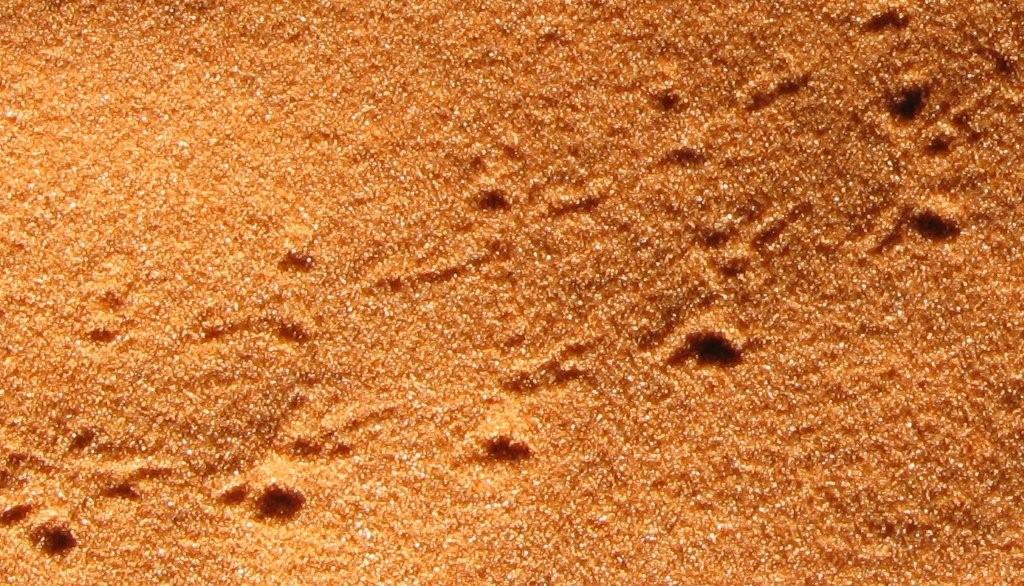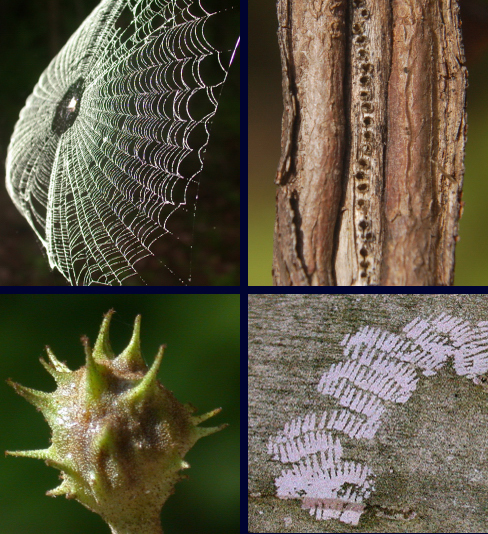
 NorthernNaturalists Home
,
Invertebrate Tracking
,
Workshops
,
Art
,
About Us
NorthernNaturalists Home
,
Invertebrate Tracking
,
Workshops
,
Art
,
About Us
| p. 505 |

|
At left is a detail of the bottom right image showing the bristle marks referred to in the caption. The cricket that made these tracks has been further identified as an Ammobaenetes species. To see the cricket, click here. |
| p. 509 | The long-horned beetle that made the pictured tracks has been further identified as the live-oak root borer, Archodontes melanopus serrulatus. To see the beetle, click here. | |
| p. 510 | More specifically, the yellowjacket that made the pictured tracks (also shown on the back cover) was (Vespula vidua), the ground hornet. | |
| p. 513 | More specifically, the pictured tracks were made by Atlantic sand fiddlers (Uca pugilator). | |
Images ©Charley Eiseman/Noah Charney